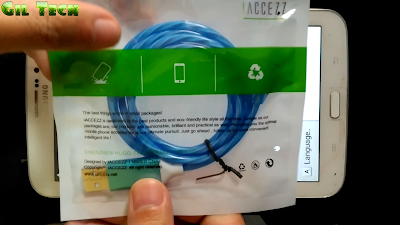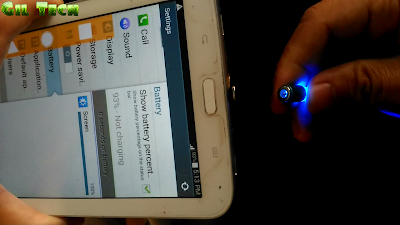The time finally came when my USB cable charger has worn out and it needs a new replacement. So I decided to buy a new one.
On my search, this USB magnetic cable by ACCEZZ caught my attention. It’s not due to its LED lighting but its fast charging feature and magnetic plug.
When I ordered this product, it was still way back before the ECQ Lockdown. So I do understand that it only arrived when the government lifted the ECQ Lockdown and turned it into GCQ. Anyway, what really matters to me is that it arrived rather than being returned back to the retailer.
The USB Cable
The length of this USB magnetic cable is indeed 1 meter long. I think a length of 1 meter is the average length of USB cables since my old one has the same exact length.
As you can see in this image, I got the version with the blue colored cable. Other available colors that you can choose from include red, green, and white. I believe that you are given the choice to choose from these colors before you place your order.
While charging especially when inside a dim room, the light from this USB cable will be a lot more pleasant to watch.
The Magnetic Plug
As I stated above, one of the reasons why I purchased this product is due to its magnetic plug feature.
During your first use, you have to insert the removable part of the plug into your device. You do not need to remove this part or simply keep it in place. The moment that you want to charge your phone, all you have to do is to connect your USB’s magnetic plug with a snap from the magnet’s pull.
Then check your phone if it is charging or not.
Fast Charging Feature
Aside from the magnetic feature of this USB cable is its fast charging capability.
It’s already been a few months since I started using this USB cable charger to charge my phone. Through this time, I noticed that this one indeed charges my phone a lot faster as compared to my old USB cable.
In fact, I do love and enjoy playing games on my phone that even while charging it, I am still playing.
But during the time when I was still using my old USB cable, it really could not keep up with my phone’s consumption with its battery while playing a certain game. I really need to stop playing a game and then leave my phone for a while to be charged.
And now that I replaced my old USB cable with this new one, I am so surprised that even though I am playing at the same time while charging, the battery level of my phone is continuously increasing.
Overall Rating
Throughout the entire period that I am using this USB magnetic cable by ACCEZZ, I didn’t come across any issues. In short, it is working perfectly fine.
It’s already been two months now since I started using it to charge my phone, so when asked for a rating, this is the type of product that I do definitely recommend to others.







